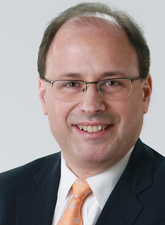New York Medical College helping businesses prepare for disasters
Many businesses aren’t properly prepared for dealing with a disaster, Dr. David S. Markenson, the director of the Center for Disaster Medicine at New York Medical College in Valhalla, told the Business Journal.

“When a disaster occurs it puts at risk both businesses and their employees during the event. Those risks are to the employees, the leadership and the people they serve,” Markenson said, noting that the ability to maintain business operations can be an early casualty. “Without disaster preparedness you can’t have continuity of operations. You can have an event that really shuts them down for days, weeks, months. You can imagine the impact that will have on a business.”
While much of the training offered by the center is targeted at community leaders and hospital emergency managers, along with law enforcement, school administrators and personnel involved in EMS, public safety and public health, the private sector also is included in the target audience.
“New York Medical College has had for greater than 15 years a unique expertise in disaster and emergency planning,” Markenson said. “We have a cadre of people who do everything from the basic science research to education training and helping people plan. We have funding from New York state to help conduct this training. We actually have simulated environments at our facilities, some of which you formerly could only find at military facilities.”
In mid-December, the center offered a course on planning and responding to a disaster incident involving children. Markenson pointed out that while many business leaders might at first dismiss the need for such preparedness because they don’t have children working in their facilities, employees do have children.
“I tell every employer it is in their vast interest that every employee has a family disaster plan because that allows the employee to come to work, return to work, stay at work,” he said.
He said businesses need to examine their ability to provide space for children in the event of a weather disaster or other serious situation that closes schools and affects normal child care activities.
“Employees stay at home or, if there’s a place in the building for children while the employees work, you actually maintain productivity of your business,” Markenson said.
He explained that some of the training the center provides deals with unique aspects of planning for children at a business or facility.
“The No. 1 thing is to just make the presumption that children will be in the plant,” he said. “You have to understand the proportion of children who are in your environment. Sometimes it may be one or two. But if you’re a movie theater in the middle of the day or a day care center you could have a large volume and so your first-aid and disaster supplies must have the numbers and equipment and sizes to take care of children. The staff at your facility that are trained to respond to an event can’t have just adult first-aid training,” Markenson said.
Markenson co-founded center in 2005. In addition to his role there and as medical director and professor of public health at the college, he serves as chief medical officer for training series and chair of the National Scientific Advisory Council for the American Red Cross.
“Fifty years ago people heard the word disaster and they thought something collapsed. Unfortunately, in recent times, people have added to that the effects of terrorism or mass casualty events and with things like pandemic flu people have added health emergencies,” Markenson said.
He said businesses need to assess what they have already done in the way of planning not just for disasters but for lesser incidents such as people slipping and falling or individual medical emergencies. He urged businesses to take advantage of preparedness resources that include the center, government emergency management offices and American Red Cross programs to help businesses plan and assess their readiness.